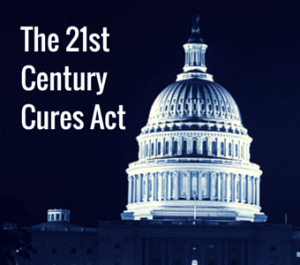 The 21st Century Cures Act received its official sanction when it was signed into law in December by President Obama, but a crucial advancement of the regenerative medicine designation portion of the Act occurred last month, thanks to the United States Food and Drug Administration (FDA) adopting a new rubric for classifying a treatment as regenerative advanced therapy.
The 21st Century Cures Act received its official sanction when it was signed into law in December by President Obama, but a crucial advancement of the regenerative medicine designation portion of the Act occurred last month, thanks to the United States Food and Drug Administration (FDA) adopting a new rubric for classifying a treatment as regenerative advanced therapy.
The Cures Act allows for accelerated FDA approval of devices and drugs categorized as treatment for regenerative advanced therapy (RAT), which includes “cell therapy, therapeutic tissue engineering product, human cell and tissue product, or any combination product using such therapies or products, except for those products regulated solely under Section 361 of the Public Health Service Act (‘PHS’), and part 1271 of Title 21, Code of Federal regulations.”
In order for a drug to receive the RAT classification, the product’s sponsor is required to demonstrate not only that the medication is considered therapeutic under the regenerative medicine umbrella, but also that it is intended for use in treating a “serious or life-threatening disease or condition,” and that clinical evidence (at least preliminary evidence) corroborates the claim that the drug can fill a present market gap in treating that condition.
Brand-new office set up to oversee RAT applications
A new office has been created in the FDA that will oversee the RAT designation process: the Office of Tissues and Advanced Therapies (OTAT). Some of the OTAT’s duties within that workflow: managing the application process; notifying the product’s sponsor within 60 days of the application receipt date as to the application’s success or failure; and providing a written explanation of the reason(s) for the rejection of the application when necessary.
As is the case for sponsors seeking designation for fast track and breakthrough therapies, the FDA does not require the sponsor of an RAT drug to include primary data with the Investigational New Drug Application (IND), but rather, only a description of preliminary clinical evidence that buttresses the RAT classification. Some examples of that information: description of the patient population studied, the design of the study (including the endpoints that were used), a description of current treatments available for the medical condition in question, as well as an explanation of the results of the study (including analysis of statistics).
When the OTAT does grant a sponsor the RAT designation it seeks, the FDA is open to meeting with the sponsor at the initial stages of the product’s development in order to explore using intermediate or proxy endpoints that might be employed in bolstering the product’s accelerated approval. Obviously this type of collaboration can streamline the path to the finish line and cut through some of the red tape that would’ve bogged down approvals in the past. And clearly, for patients facing life-threatening conditions, time is of the essence when it comes to taking advantage of novel treatments.
21st Century Cures Act’s accelerated approval for RATs not loved by all
Some professionals within the healthcare industry have warned about the risk of patient harm by ushering regenerative medicine products through an accelerated approval corridor and thereby potentially circumventing the accretion of a healthy body of evidence that can demonstrate the products’ safety and efficacy. But its many supporters hail the new process as one that can be a boon to a branch of healthcare where it’s arguably most urgently needed.
For more information/questions regarding any legal matters, please email [email protected] or call 310.203.2800.